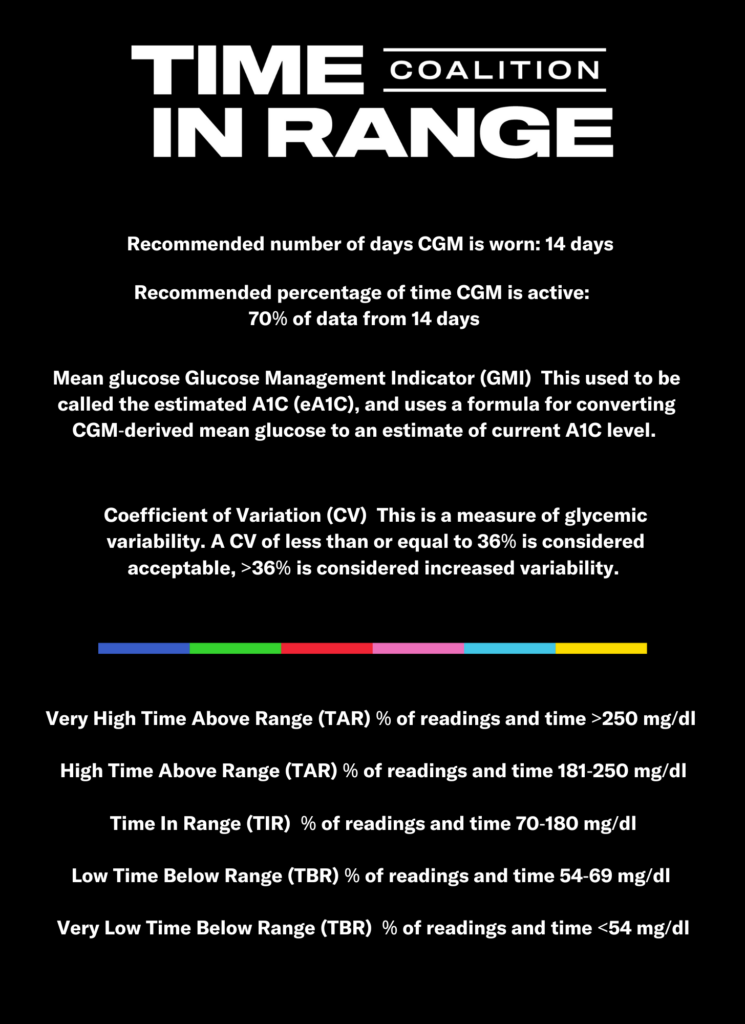While TIR may be new for you, the good news is that there’s already quite a bit of evidence behind the metric and recommendations for how to use it. The International Consensus Report on Time in Range recommends that most people with diabetes spend at least 70% of the day (around 17 hours) in the target glycaemic range of 70 to 180 mg/dL (3.9 to 10 mmol/L), which corresponds to the recommended A1C target of approximately 7% (53 mmol/mol).
For people with diabetes, increasing time spent in the target glycemic range – Time in Range – may help to reduce the risk of diabetes-related health complications.
In 2019, the International Consensus on Time in Range identified standardized clinical targets for CGM data interpretation, as follows:

The first priority is to reduce the time spent below range (work to eliminate hypoglycemia) and then focus on decreasing time above range or increasing time in range. It’s important to work with your patient to set realistic TIR goals depending on the individual. There are so many factors that could impact time in range: physical activity, food intake, medications, stress, time of day, menstruation, the list goes on. Pretty much anything that will affect blood glucose will also affect one’s time in range.
What is your patient’s current TIR? Is your patient pregnant? Does your patient have all the necessary tools for diabetes management (medications, CGM, pumps)? How much is your patient willing to devote to their diabetes management? These are just a few questions to consider when identifying a goal.
And remember, do not expect someone to consistently meet 100% time in range. This isn’t a realistic goal for many people with diabetes. The nice thing about time in range is that every day is a new one and you can take what you’ve learned from the previous day to the next.
